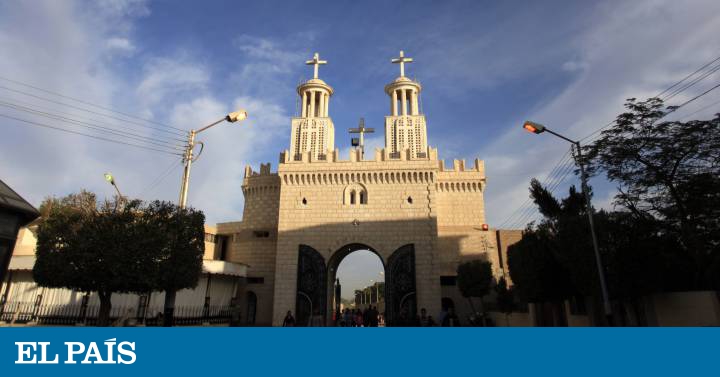Resting on the eastern bank of the River Nile as it tamely passes through southern Cairo, the historic church and monastery of the Virgin Mary of Maadi stands as one of the most important landmarks for Christians in Egypt.
The scene of several miracles, the place has also become an important stop for pilgrims visiting the Arab country.
The most unique point of the complex, in the shadow of its great church, is a stone staircase that leads to the Nile. Tradition tells that, some 2,000 years ago, these steps were stepped on by the baby Jesus, the Virgin Mary and Saint Joseph during his flight to Egypt under the threat of King Herod's soldiers.
From that same point, tradition points out that the Sagrada Familia got on board a sailing boat and headed towards the south of the country, until it reached a small town about 100 miles downstream.
Now, this church has received another honor: to become a landmark on the Camino de la Sagrada Familia, a Christian pilgrimage route that traces the route and runs through the places where it is believed that Jesus, the Virgin Mary and Saint Joseph stopped by. his passage through Egypt.
The route, developed over the last seven years by local authorities, starts in the north of the Sinai peninsula - now inaccessible - and crosses another ten governorates along its 25 stops, full of monasteries and churches, trees, springs and caves.
In January, during the Christmas celebrations, the Ministry of Tourism and Antiquities officially opened the first stop on the route, in the Nile Delta, and the rest are expected to be inaugurated soon.
“We are presenting the project as [a] gift to the international community, as is the Great Egyptian Museum.
We are sending the message that this is the [heritage] of humanity ”, explains the national coordinator of the project, Adel Gendy, who considers it the longest pilgrimage route in a single country in the world: no less than 3,500 kilometers.
Beyond the religious importance of the places through which the route crosses, the Way of the Holy Family is also a journey through the history of the Coptic Orthodox Church of Egypt, responsible for having developed a whole tradition around the episode of the flight. to Egypt briefly collected in the New Testament.
In this sense, the stops on the route have historically been places frequented by Egyptian Christians, often coinciding with the celebrated date on which Jesus is believed to have arrived at that location.
The relatively local character that enveloped the places that today make up the Camino for years began to change in the 1990s.
Then, the former Egyptian Minister of Tourism Mamdouh El Beltagy asked the powerful Pope Shenouda III to draw up a map that included all these sites, explains Cornelis Hulsman, an expert on the tradition of the Holy Family of the Coptic Orthodox Church.
The celebrations of the new millennium, Hulsman points out, and Pope Francis' visit to Egypt in 2017, Gendy adds, were two of the events that contributed the most to the project of the route.
Among its most outstanding stops are those that are in Cairo, where the Holy Family accessed what is now the northeast of the city, and in particular in Old Cairo, where some of the oldest Coptic churches are located. Of Egipt.
Before reaching the current capital, tradition places Jesus, the Virgin Mary and Saint Joseph in the Natrun Valley, which some consider the cradle of monasticism, and in which four monasteries are today, which make it another important piece the long way.
But with your permission, the most important site, and for many even the most important Christian landmark in Egypt, is the Al Muharraq monastery, some 400 kilometers south of Cairo.
The monastic complex, one of the oldest in the world that is still active, lies where it is believed that the abandoned house was located in which the Holy Family would have remained the longest in Egypt - more than six Coptic months - and from where it undertook its journey back to Israel.
Some Copts consider Al Muharraq a second Jerusalem, and many value pilgrimage there as important as making it to the Holy City.
Through the project, the Egyptian authorities intend to develop spiritual tourism in the country, especially from the moment when tourism reactivates after the pandemic.
But it also creates new opportunities in the places through which the route crosses, since, in many cases, these are points outside the mass tourism circuit.
“With this project we are also supporting local communities,” emphasizes Gendy.
"This is how we maintain and guarantee income for the locals."

